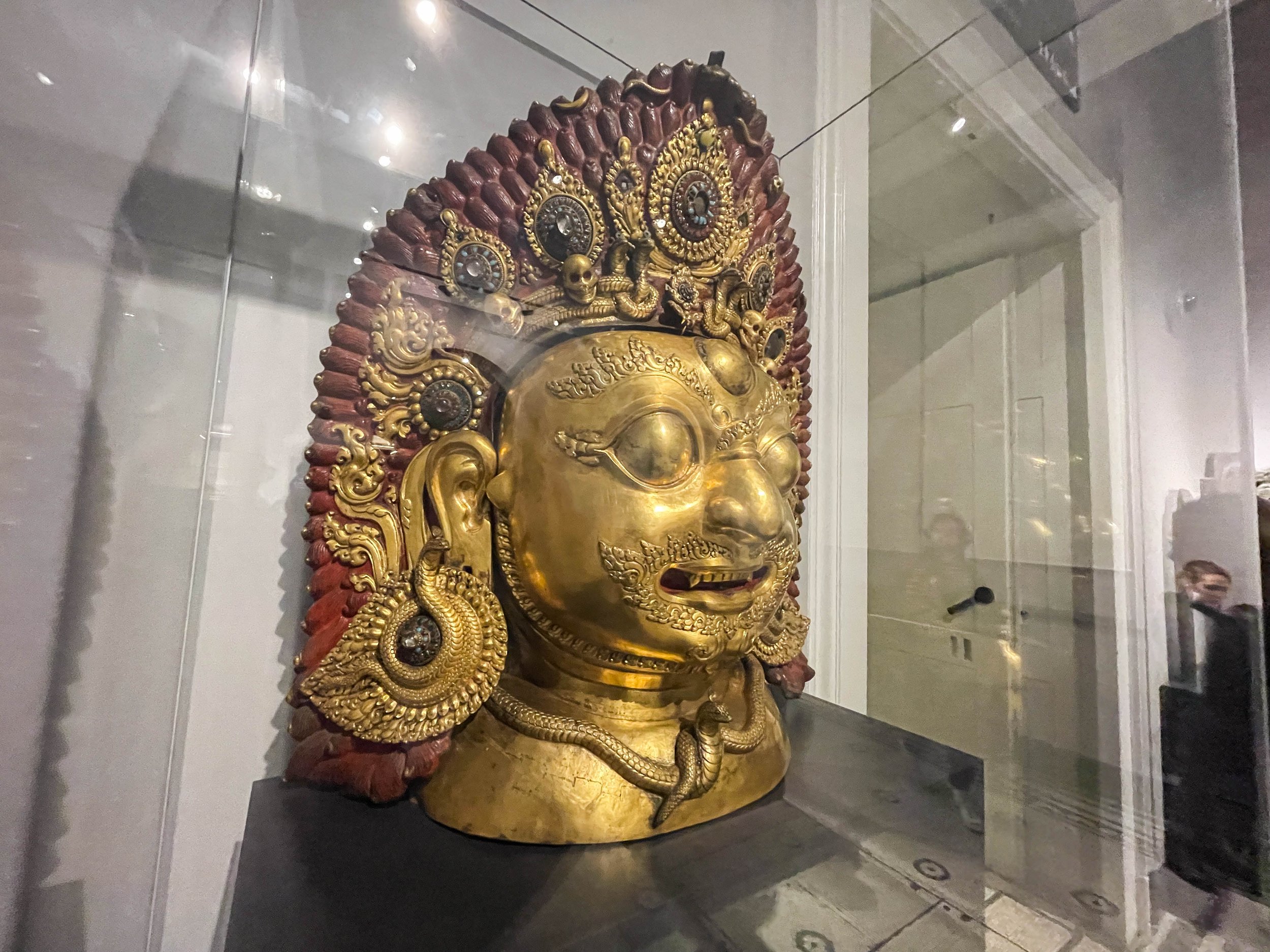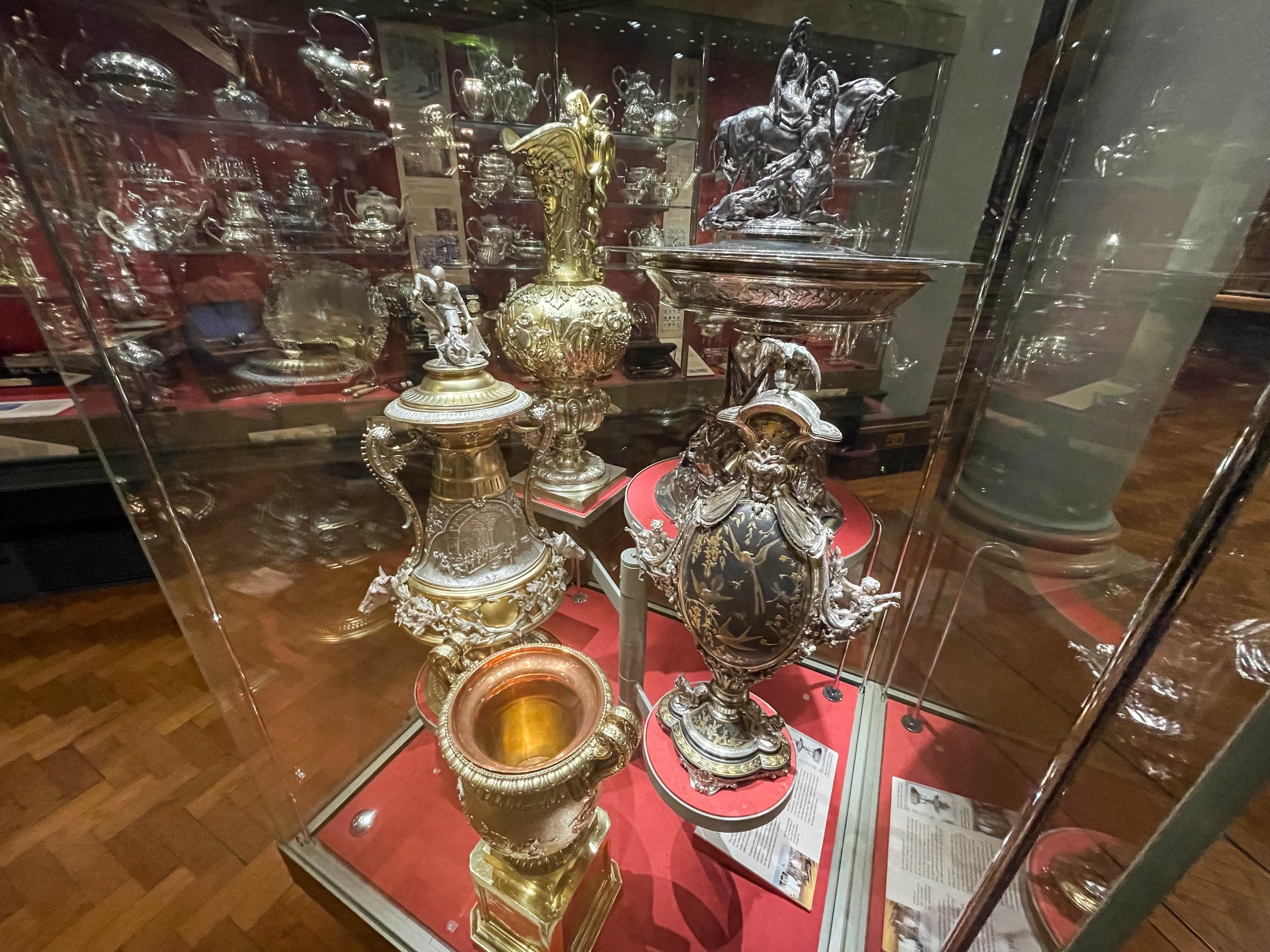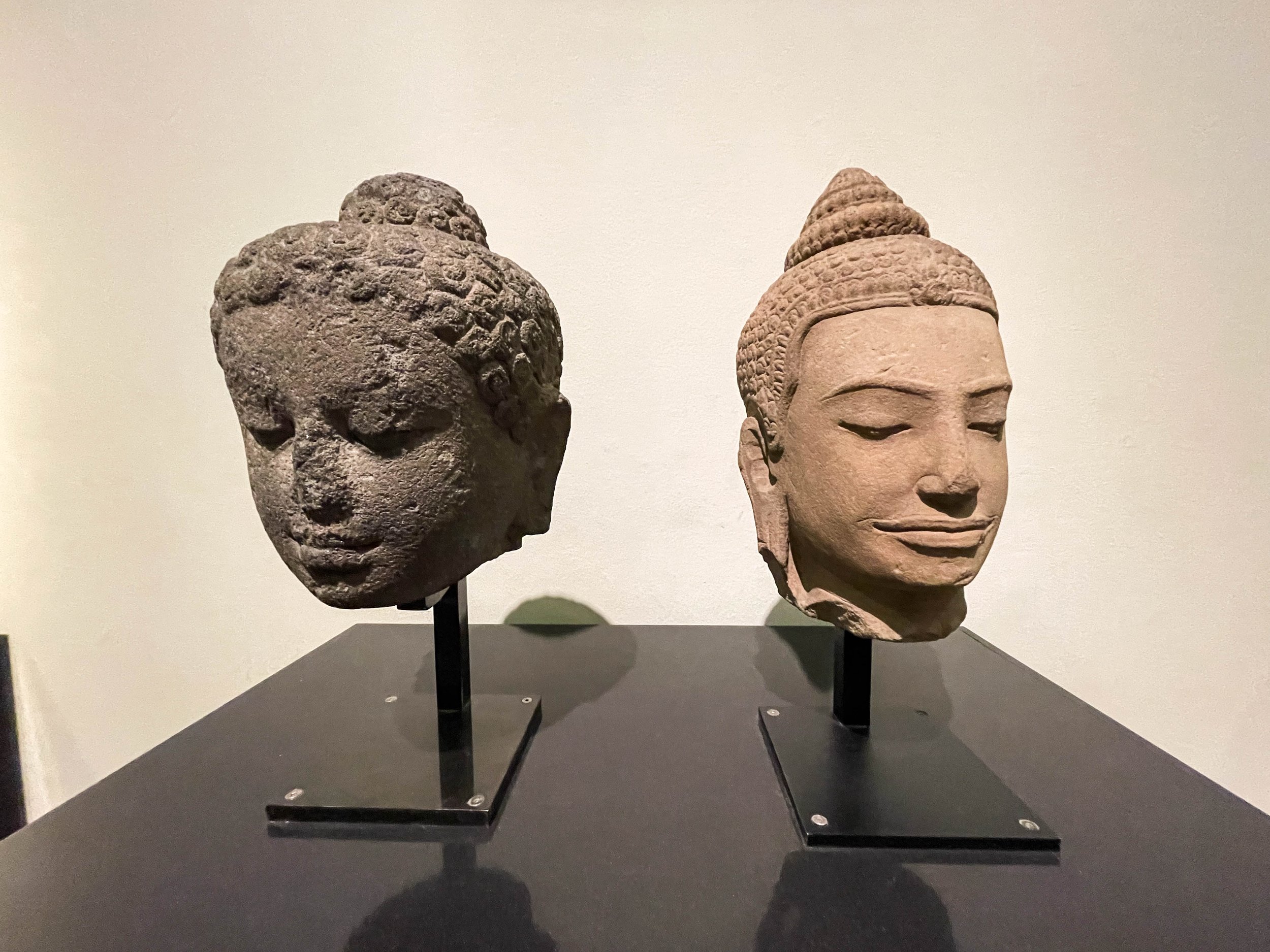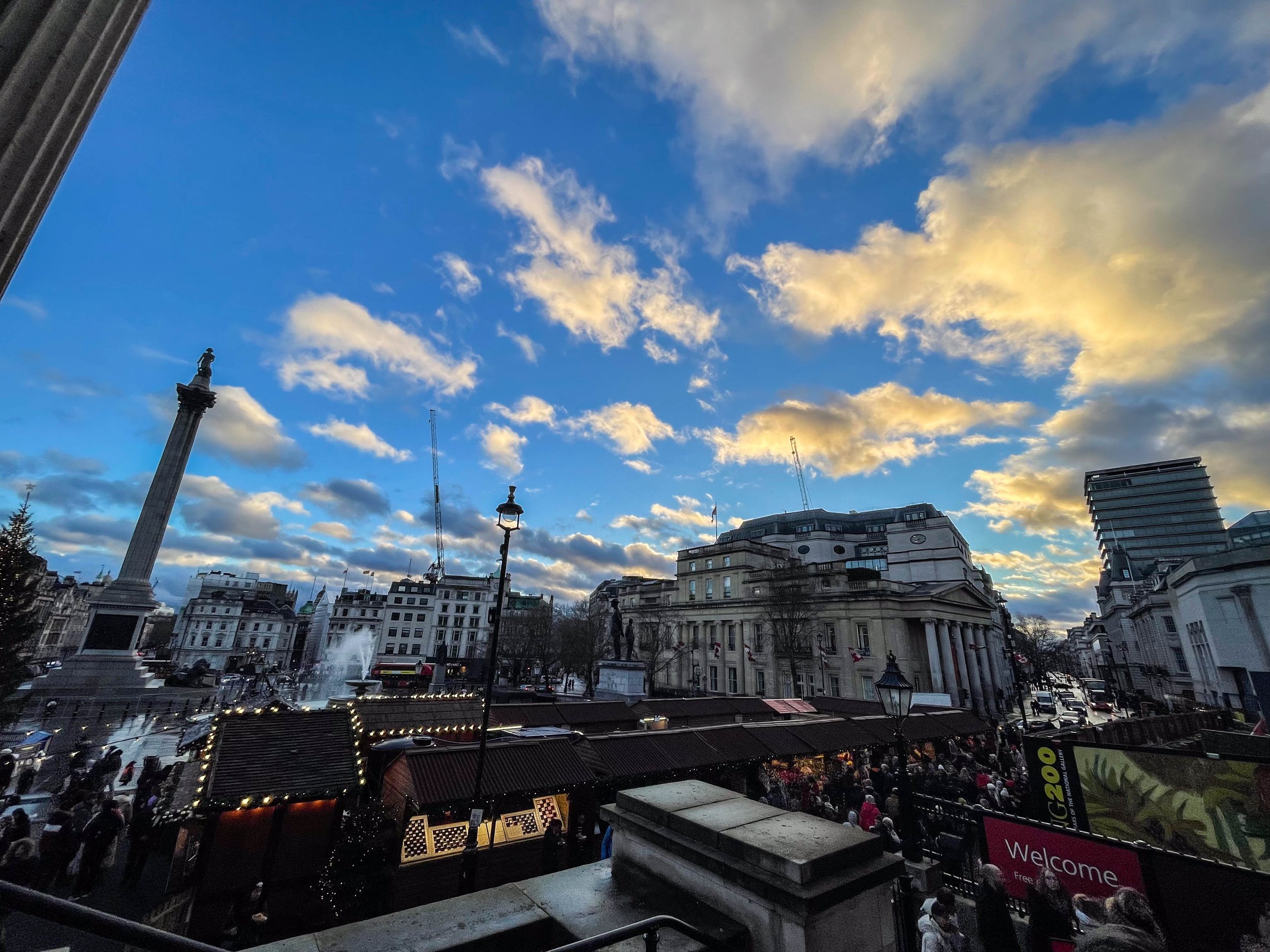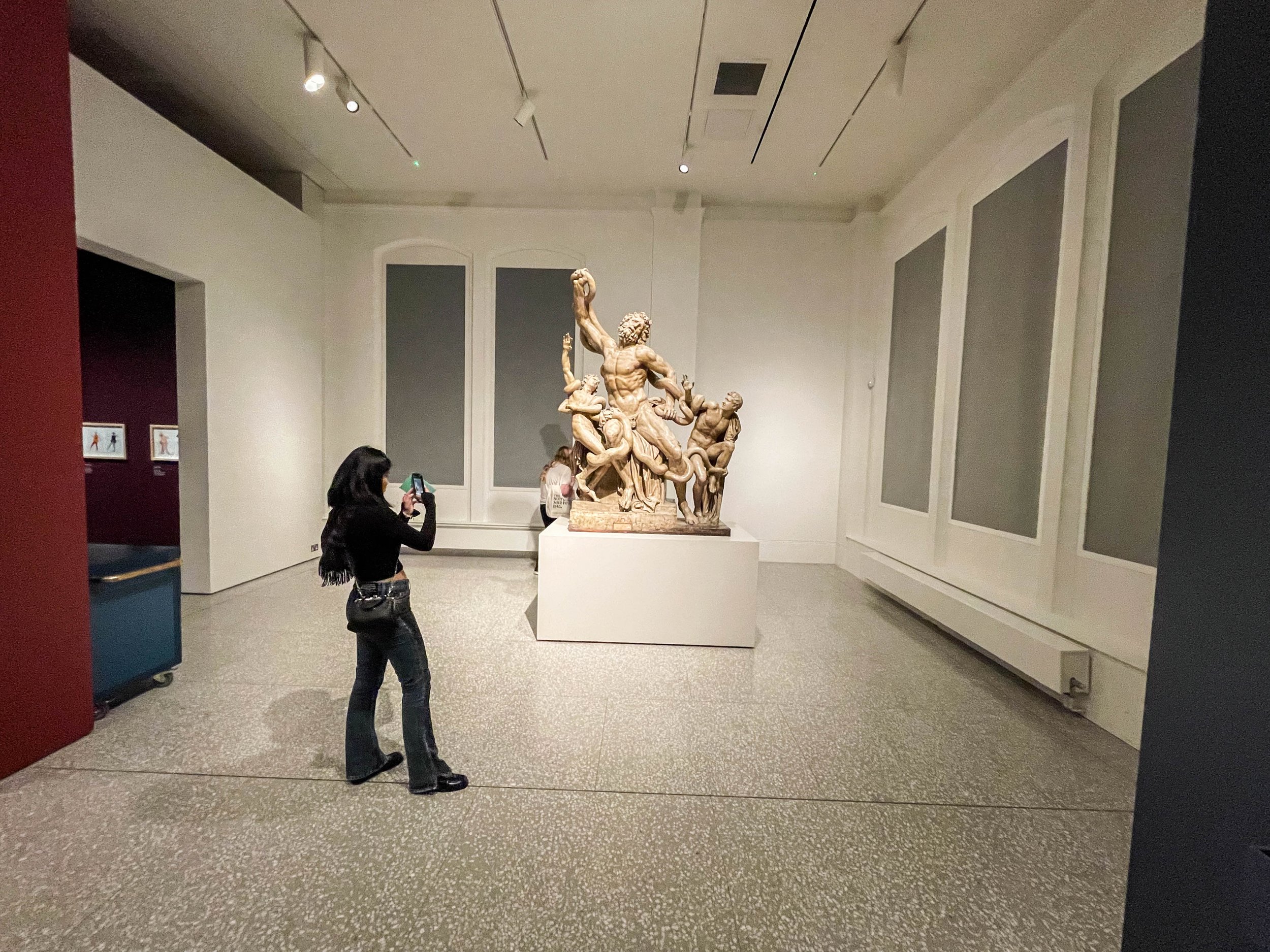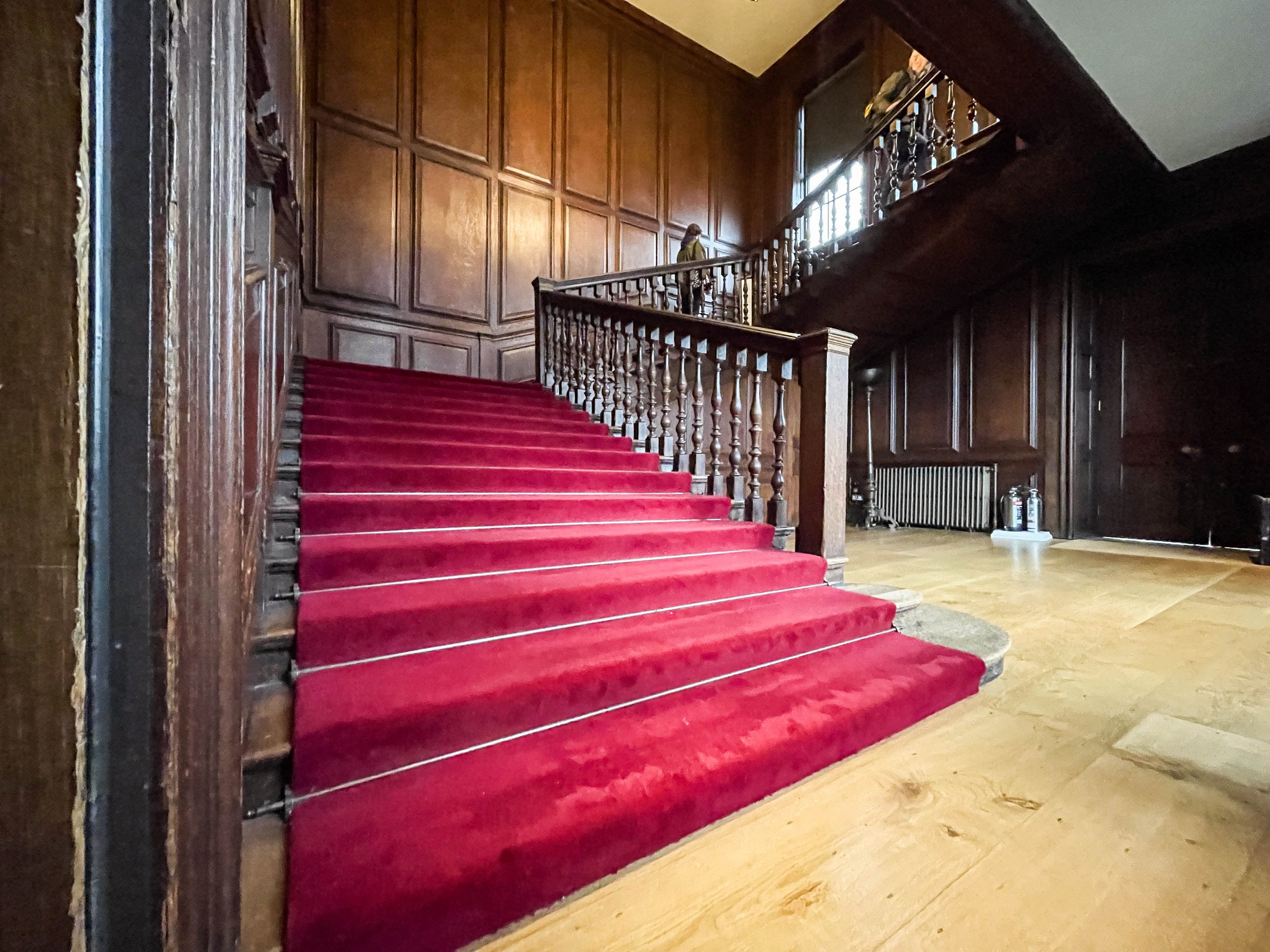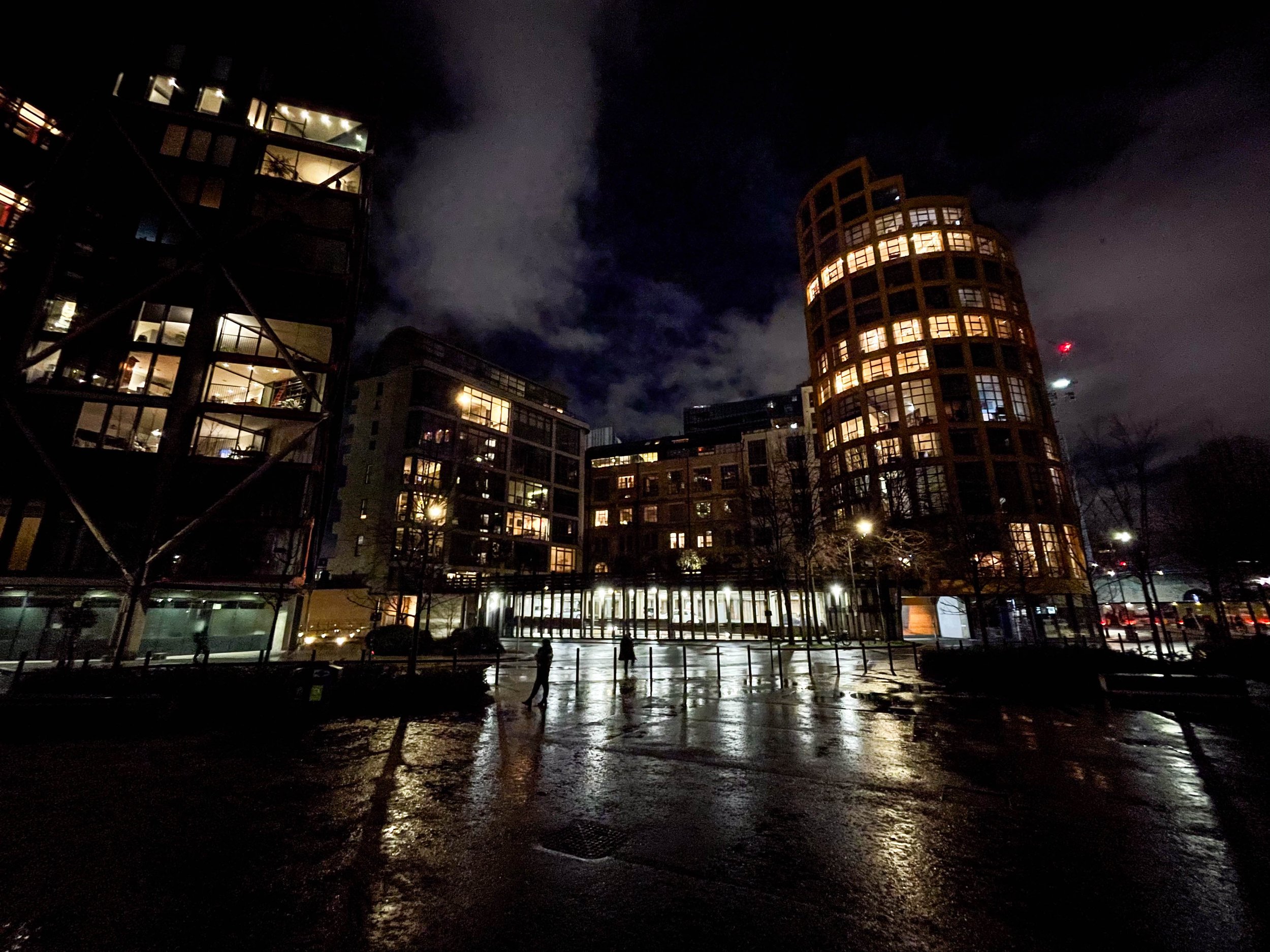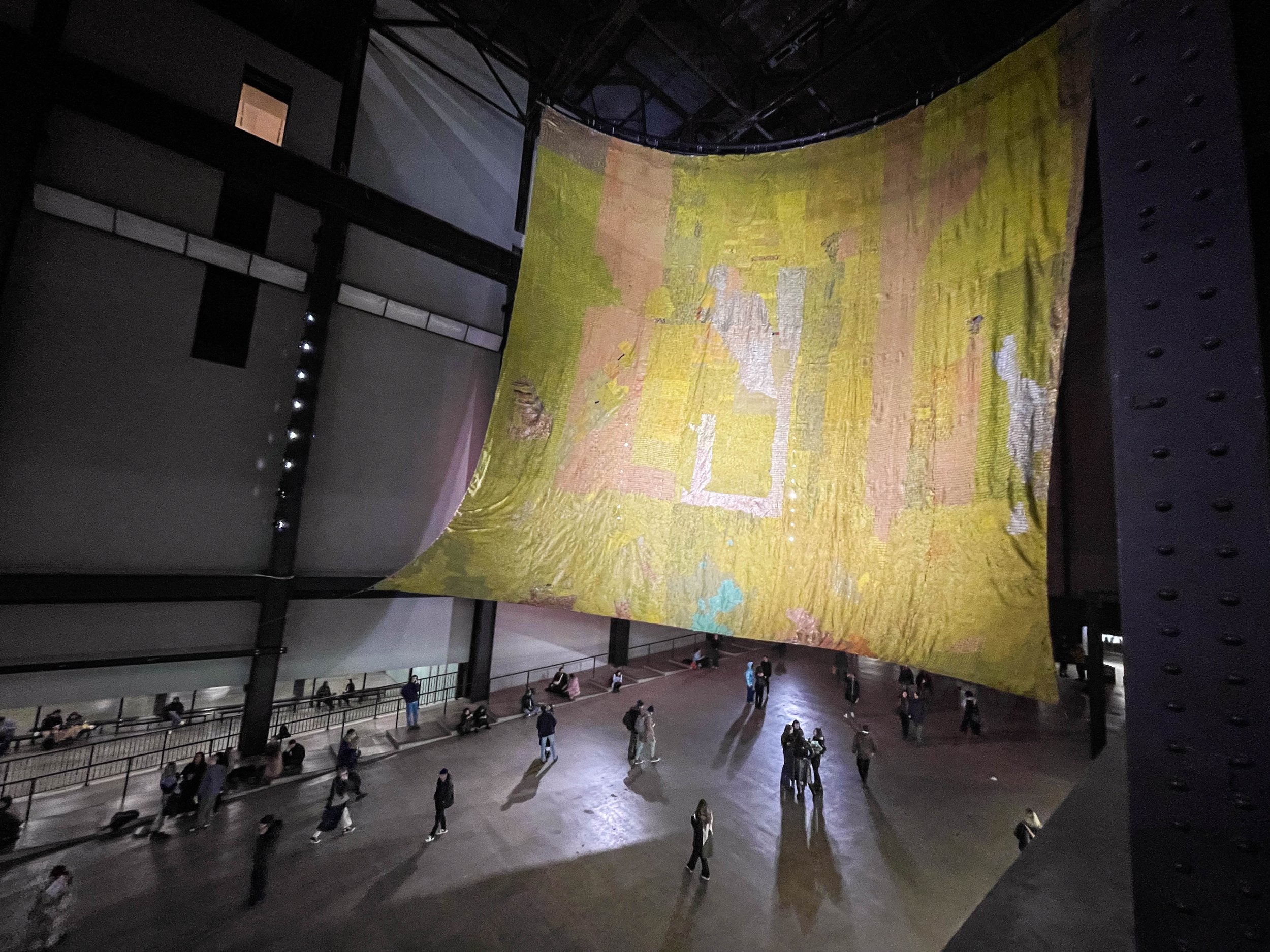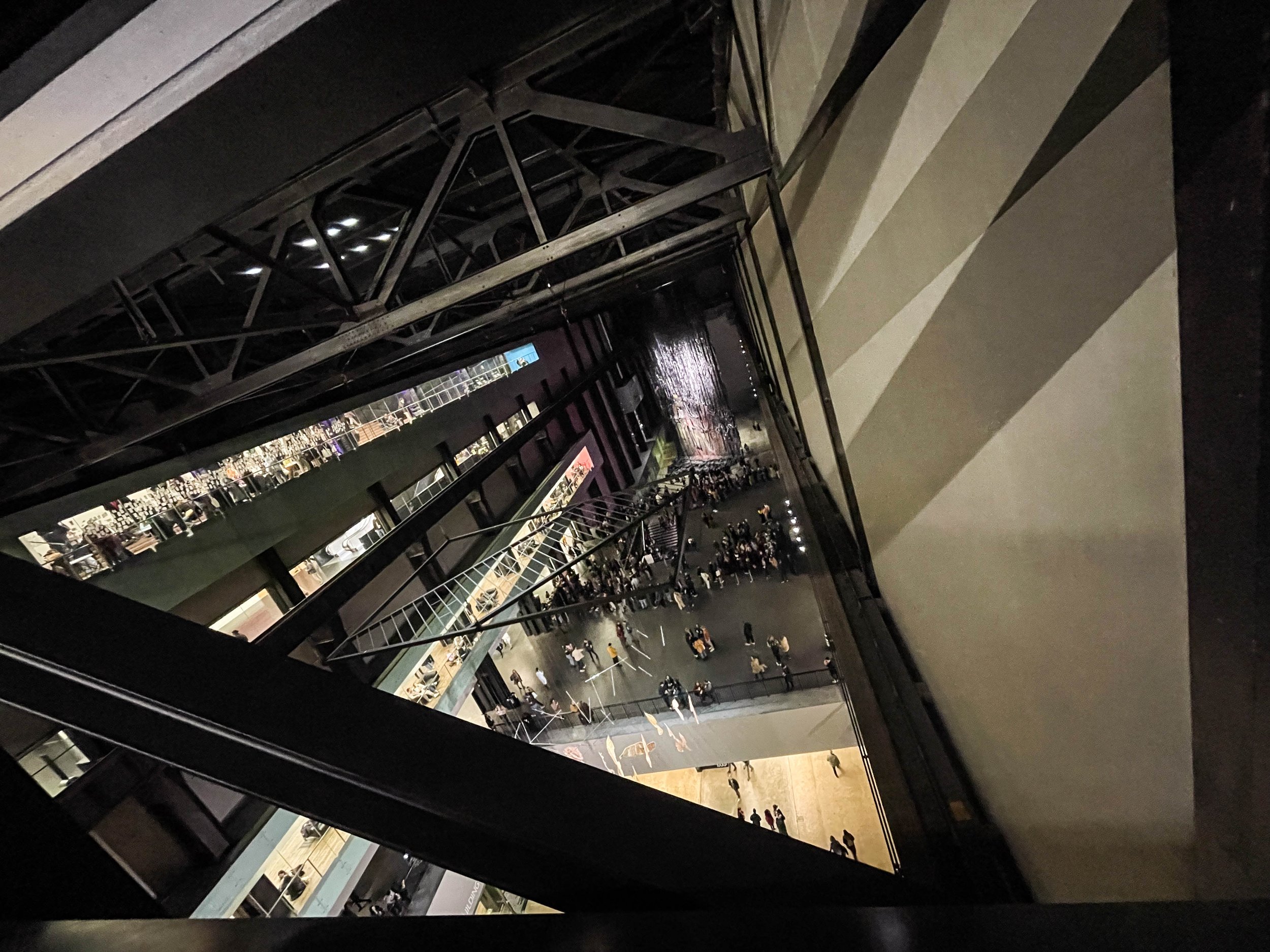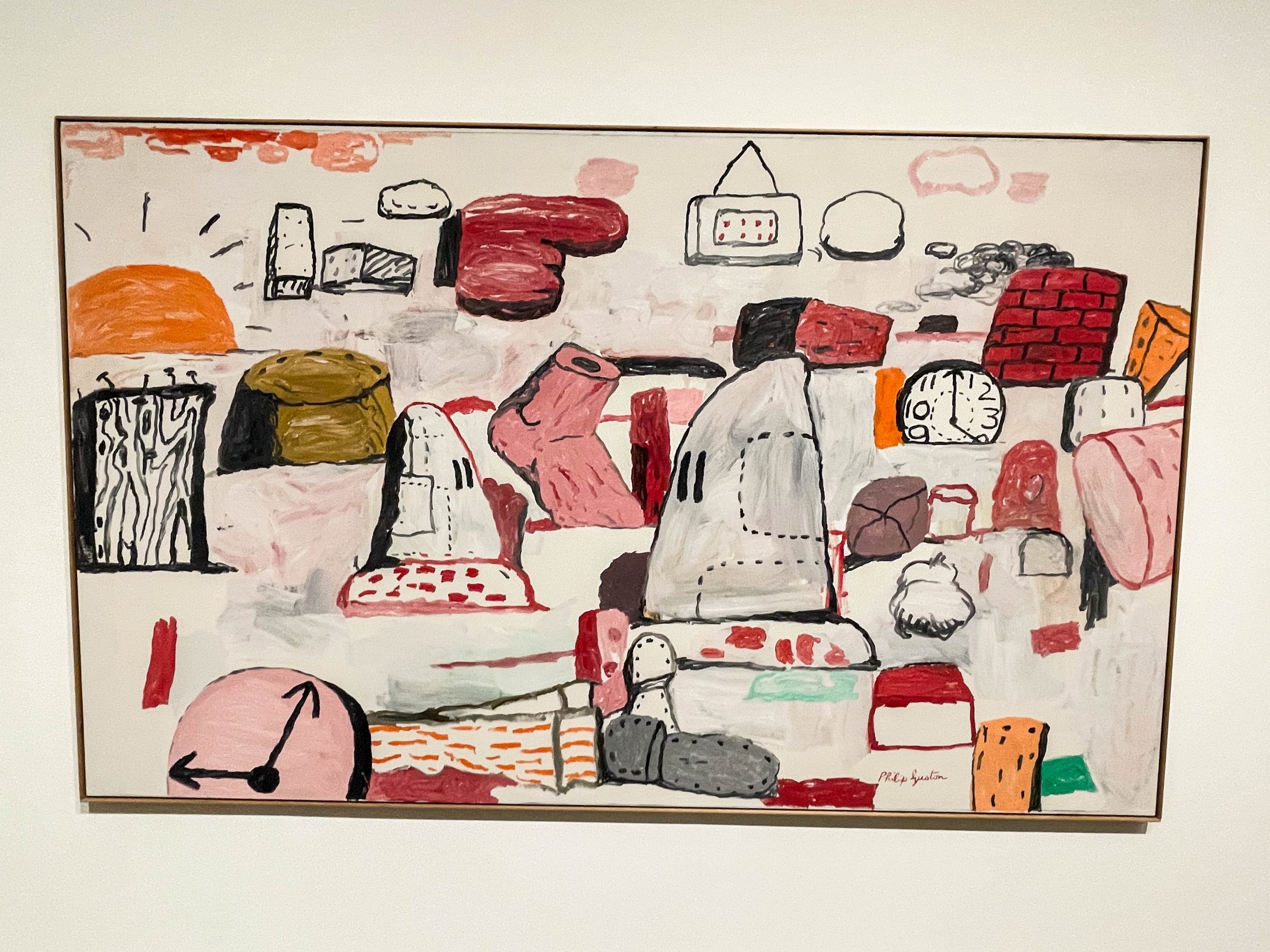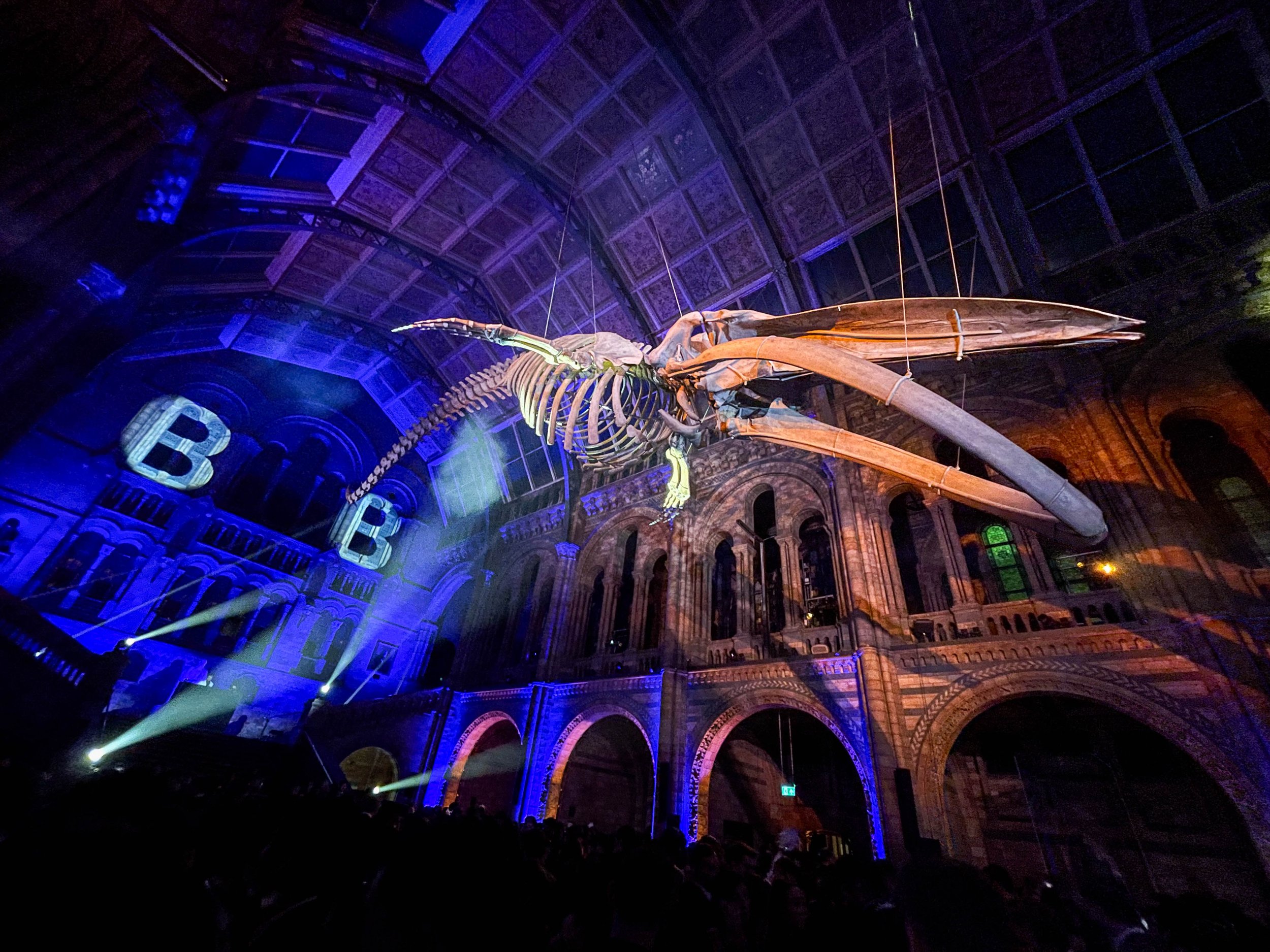This article is going to be a LONG one! And despite the length, this is still just the tip of the iceberg that is London’s vast collection of museums. I’ve heard that London actually has almost 200 museums! Honestly, I am museum-ed out even after these 9. So I’ll do my best to keep my writings on each of these short and sweet. Here’s what we’re covering today…
Index:
We’ll start with the Victoria and Albert Museum, or the “V&A” Museum for short. This place is a veritable sock drawer, filled with seemingly anything and everything. And it is marketed as such, with posters featuring seemingly random objects hanging in nearby tube stations that say “If you’re into it, it’s in the V&A.”
It’s not the strongest selling point, in my opinion. It’s like a museum dedicated to an 1800s British Monarch’s hoarding problem, which pretty much guarantees there’s going to be a lot of uninteresting stuff in here. If you can’t tell, I wasn’t the most excited to visit this museum. HOWEVER, once I got into it, I was shocked at how interesting it was. My daily commute in London is such that I walk past this museum 3-4 times per week, and somehow it took me 6 months to poke my head in. Now I think about going back into it every time I walk past it.
Oh, and did I mention that entry into this museum is FREE? And furthermore, it’s typically not as mobbed with visitors as some of the other more famous museums. The Natural History Museum is literally across the street from the V&A, so it’s got some stiff competition.
Here are some fast facts for you: The V&A was established in 1852, it has more than 2.27 million objects, spanning 5,000 years of history, across 145 galleries, occupying 12.5 acres of space in total. You could easily spend an entire day here. My first visit here started just a few hours before the museum’s closing time. I was expecting for a few hours to be more than sufficient to see this place, but by the time the security guards started ushering people towards the doors I was speed-walking trying to see as many things as possible.
So, in summary, this place is both cool, and free: a rare and magical combination.
The National Gallery sits center-stage in London, looking out over the iconic Trafalgar Square. It was founded in 1824 (which, in a city as old as this one, is a relatively recent occurrence) and is also free to enter. So, naturally, this place is often quite busy. This particular visit came during the holidays when London is extra-crowded with visitors and sight-seers, but in spite of the hustle and bustle, it was really quite magical! It helped that the walk over here caught a rare moment of blue skies in an otherwise gray winter. Here’s a few snaps from the walk over the National Gallery.
And now we’ll go inside the National Gallery. This is a big building; it’s definitely a place where you could spend an entire day, if you really wanted to take your time. There are all sorts of beautiful paintings in here, predominantly stretching from the 13th to 19th centuries. They are nearly all of some artistic and cultural importance, but I’ve separated out the most famous ones in a different gallery below. Before we there, take a walk through the National Gallery with me…
Famous Paintings: Van Gogh & MOnet
And now let me show you a few paintings that you’re likely to recognize. Below you’ll see the following paintings from Vincent Van Gogh: ‘Landscape with Ploughman’, ‘Sunflowers’, ‘Two Crabs’, and ‘Van Gogh's Chair’. And in one frame you’ll see the crowd I had to fight to get a picture of these things. And then, the final frame is ‘Water-Lilies’ by Claude Monet.
The Royal Academy of Arts is perhaps a B-list attraction compared to the National Gallery, but that’s the thing about London: IT NEVER ENDS! There are seemingly infinite museums here, so maybe this is the “indie” pick of the article. I really enjoyed this place. It’s not the biggest. It’s not got the most paintings. But at the time of my visit, it was running an exhibit called “Impressionists on Paper” that brought a lot of very famous painters into one room, which was surprisingly not very crowded.
But before we get to the impressionist stuff, let me show you the museum itself. The rendering of the “Last Supper” is not the original from Da Vinci, but apparently was a copy made by Da Vinci’s apprentices… so, not too far removed from the big man himself. However, what I found most interesting from the gallery below… in a disgusting, horrifying kind of way… is the anatomically correct sculture of the crucifixion. Here’s why it’s so diabolical: APPARENTLY, this was modeled using the actual corpse of a criminal who had been put to death for some minor, economic-driven, definitely-not-worthy-of-the-death-penalty petty crime. (This was a long time ago, not recently). The artist took the corpse and nailed it to a crucifix in order to get this hyper-realistic depiction of what a crucified body would actually look like. Yikes.
Impressionists on Paper: Van Gogh, Degas, Monet, Manet
As promised, here’s a gallery of pictures from the ‘Impressionists on Paper’ exhibition that was running during my visit. There are too many of them for me to list out individually, but what I will tell you is that everything in the galleries below is from Vincent Van Gogh, Edgar Degas, Claude Monet, and Édouard Manet.
These museums are extra interesting when I get to visit them with my mom, which was the case here. She is a painter, and as such, always has a running commentary on the works being shown that is more interesting than any museum plaque. In this room, she mentioned that Degas’s work had been the subject of some controversy over the years because of the way he tended to depict his female subjects contorted into what some would see as unflattering poses and shapes. Apparently these supposedly unflattering depictions of women contributed to a public sentiment that Degas must “hate” women. But… I dunno… if you ask me, this reveals misogyny on the part of the public, not Degas. Not to say that he was perfect, or even good—I don’t know that much about him—but portraying women in these interesting poses, to me, feels like a glorification of female figure, and indeed, the human figure. We’re obsessed with being beautiful. It’s nice to see art that glorifies what we really look like. I’d be a much healthier person today if there had been more of this in my Instagram feed over the past 10 years.
But then again…
Anyway, here are some pictures of pictures. And where you see a figure posed in a weird position, that’s probably Degas.
Up next, a brief foray into the Science Museum. Located in South Kensington next to Imperial College London, V&M Museum, and the Natural History Museum, it’s definitely got some prime real estate. However, I must admit that this is one of the less well-explored museums on this list.
As the name suggests, this massive building is filled with all things science. The majority of this seems to be focused on the aerospace arena, as there are 150 years of planes mounted throughout this place. However, what I found most interesting here was an exhibit on the COVID pandemic. It presented much of the events through a historical lens, and even had on display the actual laptop and coffee mug responsible for the first COVID mRNA vaccine. This was one of the most surreal things I have ever seen, because it happened like YESTERDAY! I had COVID like 6 months ago. It’s weird to see present day life presented in a museum. This what my ancestors are going to see from my life. 😂
Note: entry into this museum is free, but you have to book your time slot in advance.
This visit to Kensington Palace began—as I believe all visits to Kensington Palace should—with a walk through Hyde Park.
That’s where these pictures of all the swans came from.
Despite the location in the bustling heart of west/central London, Hyde Park somehow manages to remain, against all odds, something of an unofficial bird sanctuary. So it’s a nice appetizer for Kensington Palace.
Anyway, Kensington Palace was once the actual residence of England’s royal family. In fact, the famous Queen Victoria was born and raised here. However, this came relatively close to the end of Kensington Palace’s time as a royal residence. It was originally built in 1605, at which time Kensington was still being referred to as a “village"… my understanding is that many of the boroughs comprising modern-day London were once separate villages, but Kensington is central enough that I have a hard time believing that it wasn’t functionally part of London by this point in history. Anyway, the other royals who lived here were as follows: King William III, Queen Mary II, Queen Anne, King George I, and King George II.
Note for my fellow Americans, King George II was the father of George III, who would serve as King of England during the American Revolution.
Honestly, I am not terribly interested in the tangled web of history associated with the British royal family, so I will just show you the pictures. See if you can guess which famous figure is depicted in the wallpaper at the end of this gallery.
Up next, we’re going fast-forward in history from the decadence of England’s royal palaces, to the darkest days of WWII, during which Germany was bombing the bejesus out of London. During this time, Churchill and his inner circle of military leadership were running their operations out of the protected basement of a grandiose building in central London, just a stone’s throw from Westminster, Big Ben, Trafalgar Square, The Strand, etc. Here are a couple of snaps from the streets around their secret base of operations…
In the picture to the left (or above, depending on whether you are viewing this on desktop or mobile) is a model of where these secret war rooms were located relative to the big buildings pictured in the gallery above.
Even today, the entrance into these historic bunkers is easy to miss. But once you descend into this underground labrynth, it would be easy to get lost.
This museum is 50% focused on the events that transpired in this space (the planning and execution of a large portion of the Allied activities in WWII) and 50% to the life and times of one Sir Winston Leonard Spencer Churchill. He was an interesting dude. He fought in the Second Boer War in South Africa, then he was a journalist, and then he was a politician. And as a politician, he actually changed parties more than once, which would be pretty much impossible nowadays. He was like the Taylor Swift of early 20th-century politics. (The analogy here is that she is one of the few artists to achieve mainstream success in more than one genre).
If you’re interested in military and WWII history—which I definitely am—this is an interesting place to walk through. I’m less interesting in Churchill, but there’s a pretty good audio tour available that makes it easy to skip things you don’t find interesting. The cool part about this place—to me—is that is gives you a sense for what life was really like during this time for the people worked, and in many cases actually lived in these bunkers during the war. It’s hard to imagine bombs falling on London today, but this was not all that long ago. Our grandparents remember it.
Tate Modern
🌘 ~AFTER HOURS~ 🌒
Up next we have the Tate Modern! This place actually has incredible views St. Paul’s Cathedral and the Millennium Bridge, but I don’t have pictures of that stuff for you this time around because this extra-special visit happened at night! And I didn’t have my good camera with me.
The Tate Modern is London’s premiere modern art museum. It’s open most days, but once a month, the Tate Modern actually stays open after hours and serves drinks and food in museum. It is awesome. I would HIGHLY recommend that you attend one of these night sessions if you can. It would make for a great date night. 😉
Oh, and did I mention that entry is free? The drinks and food cost money though.
During my visit, there was a temporary exhibit on from Yoko Ono that had been the subject of much advertising and publicity around London. Naturally, we went in to see what all the fuss was about. And this is where I saw one of the grossest things of my whole life. There was a darken room where old, abstract films were being shown. They looked like they came from the 1970s or so, judging by the film quality. We entered the room, and the film promptly cut to an extreme close-up of a very hairy vagina.
Then a fly landed nearby.
Then the fly began to walk through the forest of pubic hair.
And then the fly walked into the vagina… and eventually back out again.
Ya know what? I’m just gonna say it. Fuck Yoko Ono! I did not consent to seeing that shit.
The rest of her exhibit—though less gross—was still just weird. And here’s my hot take: The intentional inaccessibility of her work is condescending and performative. I think it’s designed to get a cheap reaction out of you or to make you feel stupid.
Anyway, putting my new-found hatred for Yoko Ono aside, there is a lot of really amazing art here! This includes pieces by famous artists such as Andy Warhol, Pablo Picasso, Amedeo Modigliani, Henri Matisse. However, there was one artist in particular who I really fell in love with during this visit: Philip Guston. I found his work to be completely captivating. One good quote from him that I read on a plaque in this exhibit—next to abstract renderings of the KKK—was that it was “the artist’s responsibility to ‘unnumb’ oneself to the brutality of the world. ‘That’s the only reason to be an artist … to bear witness’”. I love his work.
The final 2 pictures here show a “concert” that was happening in the atrium/lobby of the Tate Modern. On our way out, we joined the crowded to see what was going on. At precisely that moment, the singer announced that their final song of the night would be a cover of a Yoko Ono “song,” wherein she would ask the crowd to scream for world peace. She then proceeded to direct everyone in the crowd to scream at the top of their lungs continuously for what must have been 6-8 straight minutes. Listen to this:
My ears were ringing and in physical pain by the time I left. Another negative Peter point for Yoko Ono. This may have been one of the least peaceful experiences of my life. 😂
Natural History Museum
~private event @Night~
And finally, the grand finale. The cover photo for this article is super cool, right? It’s the kind of thing I would find on Google images randomly when research a trip and then end up frustrated that it’s impossible to figure out where and how that photo came to be. Well, I'll tell where it came from…
I am doing my post grad degree at Imperial College London right now—which is right down the road—and the business school held its winter ball inside the Natural History Museum. Normally this place closes before nightfall, but for us it stayed open one night in January! We all turned up in fancy clothes and were served drinks while we wandered the museum at night. It was one of the coolest experiences I’ve yet had in London.
The pictures of the crowd under the suspended whale skeleton—that was a rave. It was amazing.
That’s it for this article! There are hundreds more museums in London that are worth seeing… but I probably won’t be writing about them any time soon. Even this article was kind of overwhelming to piece together. The next time I go museum-ing in London, it will be as a simple visitor, not a blogger.
And now, a sample of London’s amazing jazz / soul scene.






